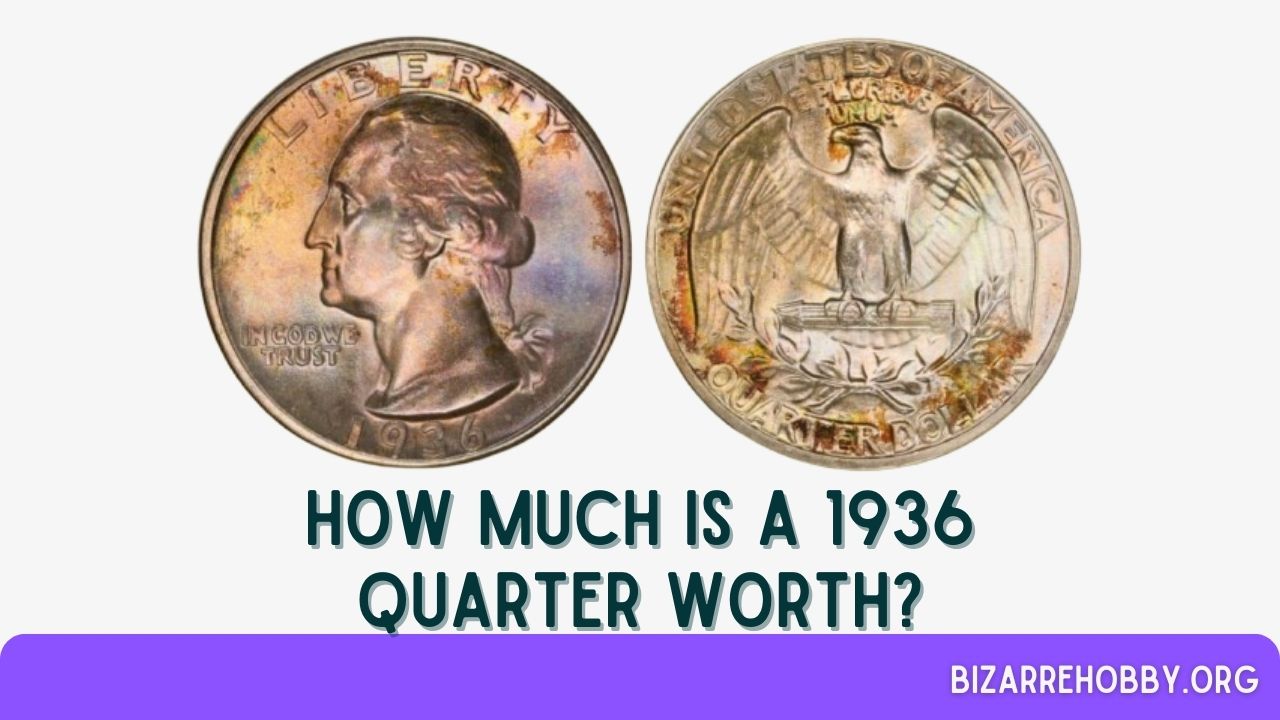The year 1936 marked the fifth production of the Washington quarters, coins that hold significant historical and numismatic value. If you happen to own a 1936 quarter, its value could range widely depending on its condition and specific characteristics.
But what sets apart an ordinary 1936 quarter from one that could be worth a collector’s fortune? This article will explores the 1936 quarter’s value, examining the key factors that influence its worth. We’ll also explore the coin’s design and historical significance.
Ready to uncover more about this fascinating piece of history? Let’s dive in!
Table of Contents
Value Chart for 1936 Quarter
| Mint mark | XF45 | MS60 | MS65 | MS67 |
|---|---|---|---|---|
| 1936 No Mint Mark Quarter Value | $9 | $32 | $90 | $400 |
| 1936 D Quarter Value | $140 | $625 | $1,150 | $4,150 |
| 1936 S Quarter Value | $27 | $100 | $265 | $1,100 |
| PR45 | PR60 | PR65 | PR67 | |
| 1936 No Mint Mark Proof Quarter Value | $225 | $525 | $1,000 | $7,500 |
Historical Background of the 1936 Quarter
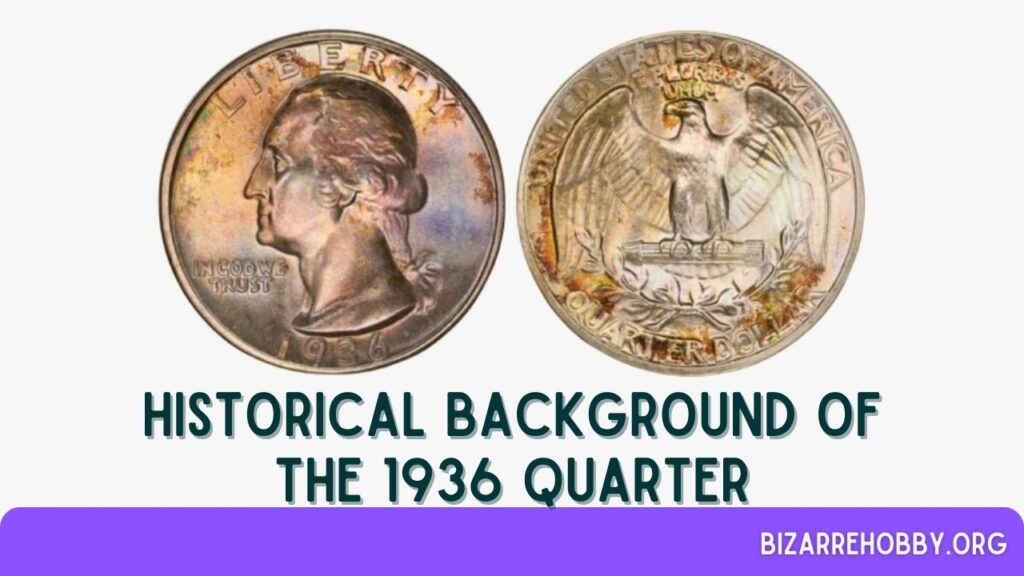
The 1936 quarter is part of the well-known Washington quarter series, named for the iconic image of George Washington on the obverse side. Originally, these coins were meant to commemorate the 200th anniversary of Washington’s birth, with an initial plan to issue a half-dollar coin for a single year.
However, plans shifted, and it was decided that the quarter would be a permanent addition to U.S. coinage instead of a half-dollar. The Treasury organized a design competition, and the winning design by sculptor John Flanagan was chosen to grace the new coin.
The first Washington quarters were minted in 1932, made from 90% silver and 10% copper. As silver prices rose over the years, the cost of producing these coins became unsustainable. Consequently, starting in 1965, the composition was changed to a copper core with a cupronickel outer layer, a formula that remains in use today.
The shift to a more durable material necessitated adjustments to the design, particularly lowering the relief to ensure the coins could be struck effectively.
In 1936, quarters were produced at the Philadelphia, Denver, and San Francisco mints, with Philadelphia also striking proof coins. Among these, the 1936 D quarter is particularly rare in high-grade condition, contributing to its higher market value.
Designs of the 1936 Quarter
Throughout the years, numerous US Mint coins have experienced alterations in both their design and metal composition. However, the Washington quarters retained their original design from 1932 to 1998, even though their metal composition changed in 1965.
Obverse Design of 1936 Quarter
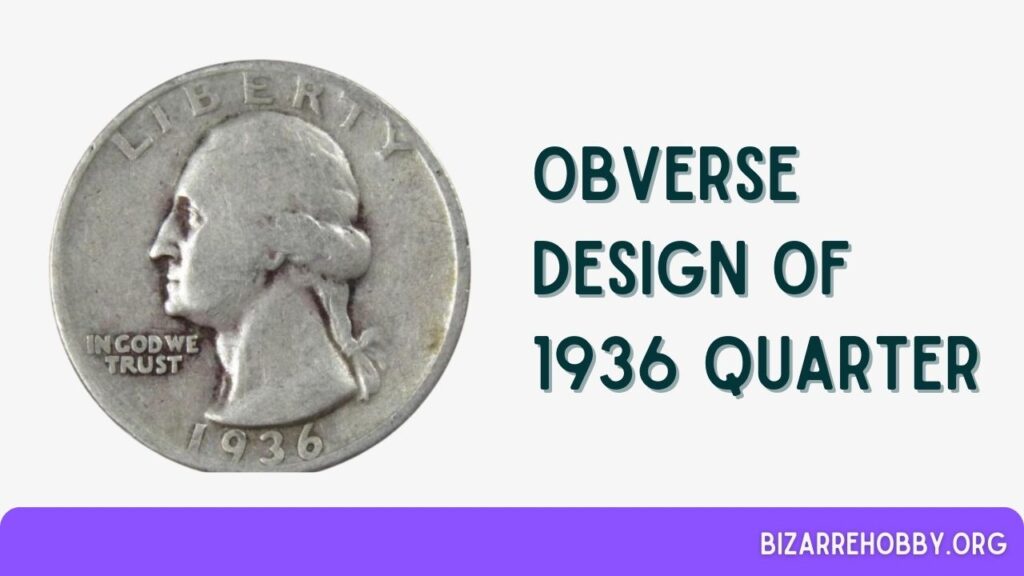
The obverse, or “heads” side, of the 1936 quarter features the profile of George Washington, facing left. The design was initially intended for a one-year commemorative coin to celebrate Washington’s bicentennial. However, it was later decided that Washington should be honored with a permanent coin.
A committee originally favored a portrait by artist Laura Gardin Fraser, but Treasury Secretary Andrew W. Mellon preferred John Flanagan’s design. Despite some opposition, Flanagan’s design was ultimately used.
Flanagan’s initials are inscribed at the base of Washington’s bust. The word “LIBERTY” arches across the top of the coin, with the date placed at the bottom. The familiar motto “IN GOD WE TRUST” is positioned to the left of Washington’s chin.
Reverse Design of 1936 Quarter
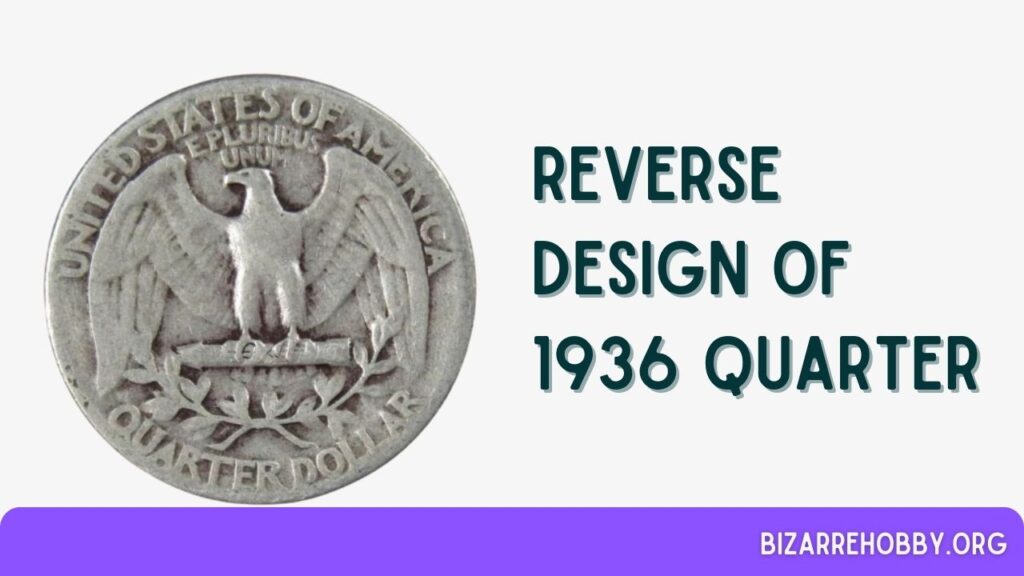
The reverse side of the 1936 quarter, also designed by Flanagan, features a heraldic eagle with wings spread wide, perched on a bundle of arrows, with an olive branch below. This stylized eagle caused some debate upon its release, even prompting The New York Times to consult an ornithologist, who confirmed it as a bald eagle, the national symbol of the United States.
Above the eagle’s head is the Latin motto “E PLURIBUS UNUM,” meaning “From the many, one,” a nod to the formation of the United States as a union of states.
The words “UNITED STATES OF AMERICA” curve along the top of the coin, while “QUARTER DOLLAR” is inscribed at the bottom. Quarters struck in Denver and San Francisco bear a “D” or “S” mint mark, respectively, located below the olive branch. If no mint mark is present, the coin was minted in Philadelphia.
Technical Specifications of 1936 Quarter
Being composed primarily of silver, all 1936 quarters hold intrinsic value. Each coin weighs 6.3 grams and has a diameter of 24.3 millimeters. The edge of the coin features a reeded pattern, a series of grooves running perpendicular to the coin faces. This design element, introduced in the 18th century, served as a safeguard against fraud, making it easier to detect if metal had been shaved from the coin’s edge.
Notably, a comparison between a 1936 quarter and one from a decade later reveals slight differences. In 1944, modifications to the dies made the lettering sharper, and the date was slightly enlarged.
Grading Guide for 1936 Quarter
Coin grading experts typically use the Sheldon scale, which ranks coins from 1 to 70, with 70 representing a coin in perfect condition. Graders evaluate several aspects, including the coin’s overall appearance, wear, and any signs of damage. Additionally, they assess factors like the coin’s condition, color, luster, and the presence of any errors.
For collectors, understanding the grade of a 1936 quarter is crucial in determining its value. Be sure to consult our comprehensive Washington Quarter grading guides to accurately assess your 1936 Washington Quarter. Knowing the grade will help you determine its exact worth.
| Sheldon Scale | Grade |
|---|---|
| 1 | Basal State-1 |
| 2 | Fair |
| 3 | Very Fair |
| 4, 5, 6 | Good |
| 7, 8, 10 | Very Good |
| 12, 15 | Fine |
| 20, 30 | Very Fine |
| 40 | Extremely Fine |
| 50 | About Uncirculated |
| 60 | Mint State |
| 65 | Mint State |
| 70 | Mint State |
1936 Quarter Value Guide
The 1936 Washington quarter is a fascinating piece for collectors, not just for its historical significance but also for its varying values based on mint marks and conditions.
This guide explores the worth of these quarters, highlighting the differences between those minted in Philadelphia, Denver, and San Francisco, as well as the unique proof versions.
1936 No Mint Mark Quarter Value
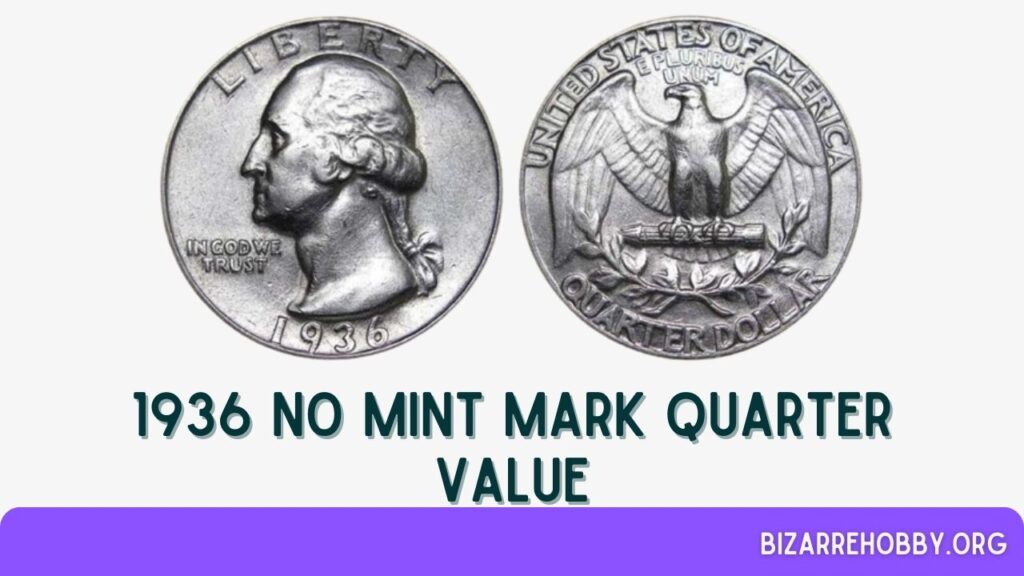
In 1936, the Philadelphia Mint produced a significant 41.3 million quarters. According to the Professional Coin Grading Service (PCGS), about 10% of these coins have survived across various grades today.
The value of a 1936 quarter is primarily determined by its condition, which is evaluated on a scale from 1 to 70. Coins graded at 1 are in poor condition, with minimal details visible, while those graded at 70 are considered flawless.
Of the estimated 1.4 million surviving 1936 no mint mark quarters, around 40,000 are believed to be in mint state (graded 60 or higher). In coin collecting terms, “mint state” means the coin is uncirculated.
For a circulated 1936 quarter graded XF45 (extremely fine), the value is around $9. However, if you have a mint state coin, the minimum value starts at $30. As the grade improves, so does the value: an MS63 coin is worth about $42, and an MS64 coin is valued at $70. A coin graded MS65, which is the threshold for being termed a “gem,” is worth approximately $90.
The value increases significantly for higher grades. An MS67 coin is valued at $400, and an MS67+ coin can fetch up to $1,900. The finest known example, graded MS68, is valued at an impressive $25,000.
1936 D Quarter Value
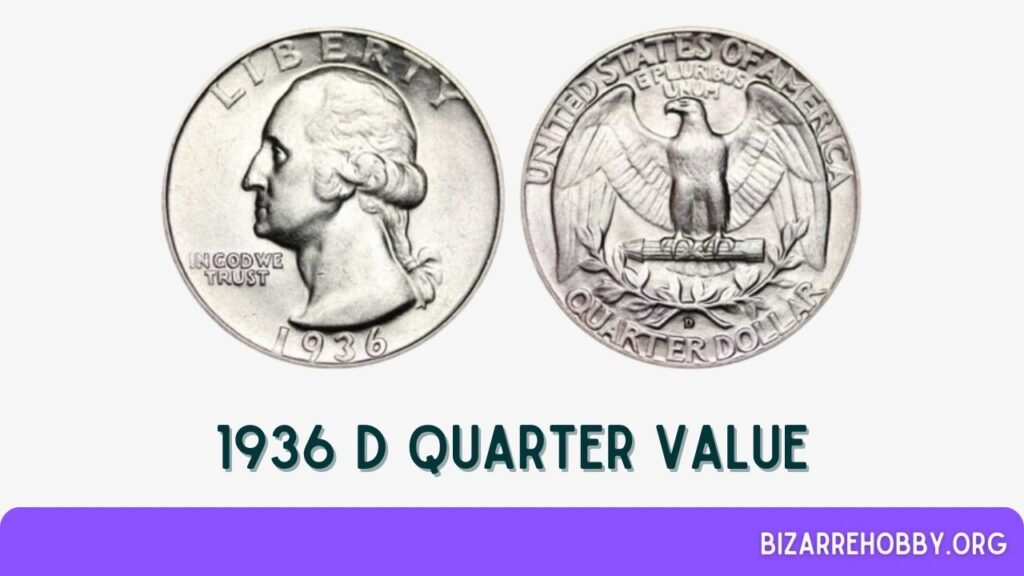
The Denver Mint produced only 5,374,000 quarters in 1936. Today, it is estimated that around 27,000 of these coins survive in mint condition, with about 3,920 in gem grades. This makes the 1936 D quarter a key mintage in the Washington quarter series.
Even in the poorest condition, a coin graded 2 is worth around $12, with a premium for coins graded 1, which are valued at about $26.
An example graded XF45 is valued at around $140. For a mint state quarter, the minimum value is $625. A gem MS65 is worth approximately $1,150.
The finest examples are ten coins graded MS67+, each valued by the PCGS at $10,000.
1936 S Quarter Value
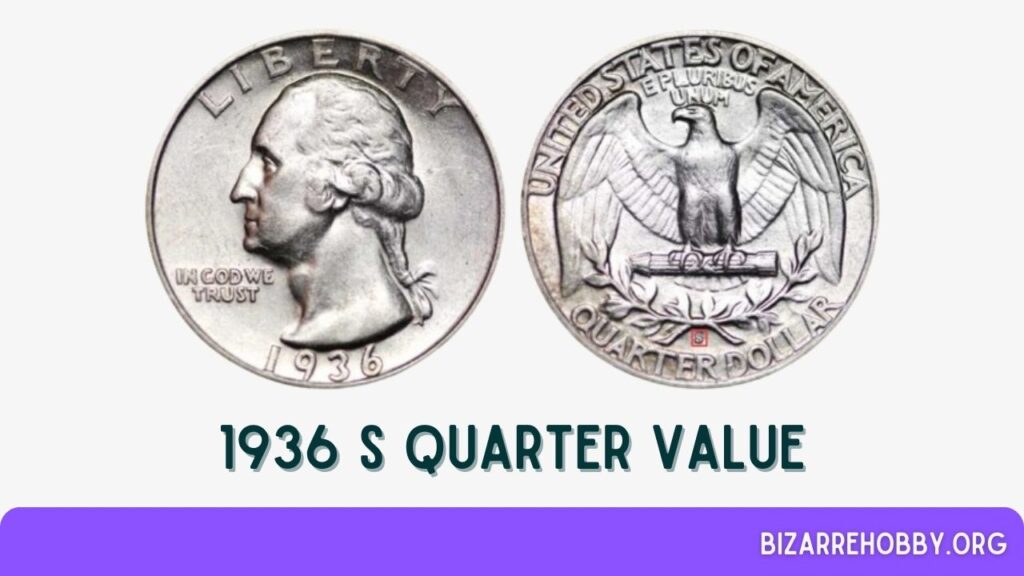
In 1936, the San Francisco Mint struck even fewer Washington quarters than the Denver Mint, with a mintage of just 3,828,000 coins.
However, mint state examples are more readily available, with around 40,000 believed to have survived. Approximately 9,700 of these are considered gems.
A coin graded 2 is worth around $9, while a VG20 (very good) example is valued at about $12. An XF45 coin is worth around $27.
For a mint state example, values start at $100 for an MS60 and rise to $265 for an MS65.
The top examples are two coins graded MS68, each valued by the PCGS at $26,500.
1936 (P) No Mint Mark Proof Value
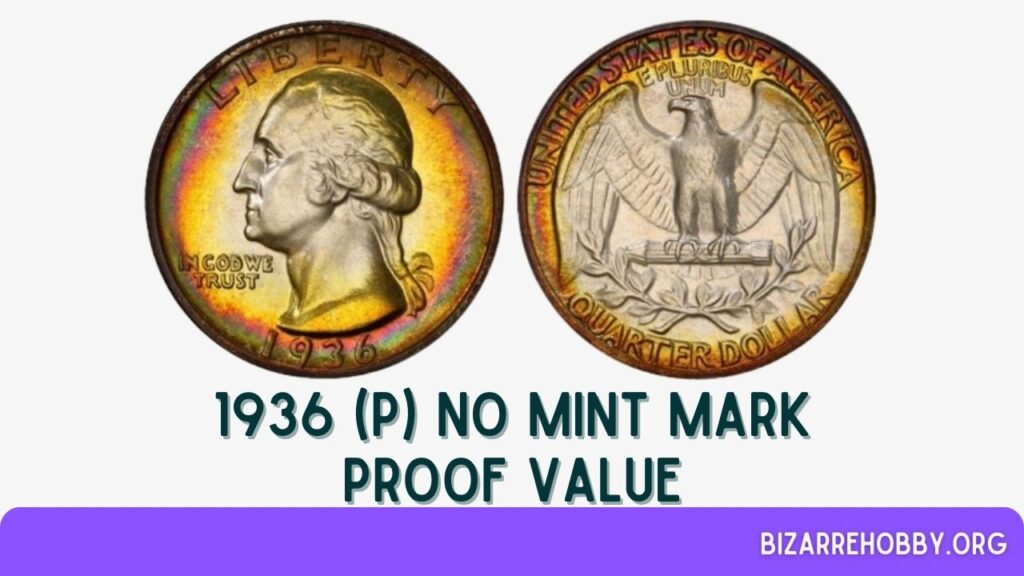
1936 marked the first year that proof versions of Washington quarters were struck. These coins were produced using highly polished planchets and specially prepared dies.
The proofs were aimed at collectors and could be ordered individually or as part of a set with other denominations.
Only 3,837 proof quarters were struck, making this the lowest mintage of any denomination in the 1936 proof set. Some of these coins entered circulation and can be found today at grades as low as PR40.
At that level, the value is around $210. A mint state PR60 1936 proof quarter is worth about $525, and a gem PR65 is valued at around $1,000.
The finest known proof quarter, certified by the PCGS at MS68, is valued at an astonishing $40,000.
Rare 1936 Quarter Errors List
Errors in coin production can make certain quarters particularly valuable to collectors. These errors occur during the minting process and can result in unique and rare variations. Here are some notable errors found in 1936 quarters:
1936 (P) No Mint Mark Double Die Obverse Error
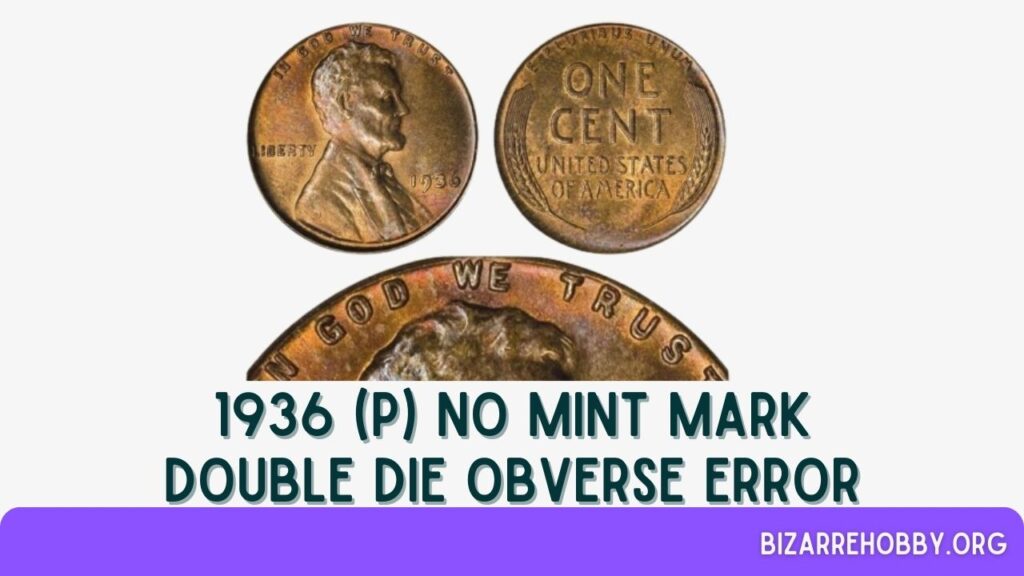
Double die errors occur when there is a misalignment during the transfer of the coin design from the hub to the die, causing parts of the design to appear doubled. This error can be found on both the obverse (front) and reverse (back) of the coin. When it appears on the obverse, it is known as a “double die obverse” (DDO).
In 1936, one of the dies used at the Philadelphia Mint had this error. Collectors should look for doubling on the letters of “IN GOD WE TRUST.” The value of these error coins varies based on their condition.
A coin graded 4 by the PCGS is valued at $18, while an XF45 example is worth around $260. Mint state examples start at $825, and the finest known coins, graded MS66, are valued at $3,500 each.
1936 S Quarter Tilted Partial Collar Error
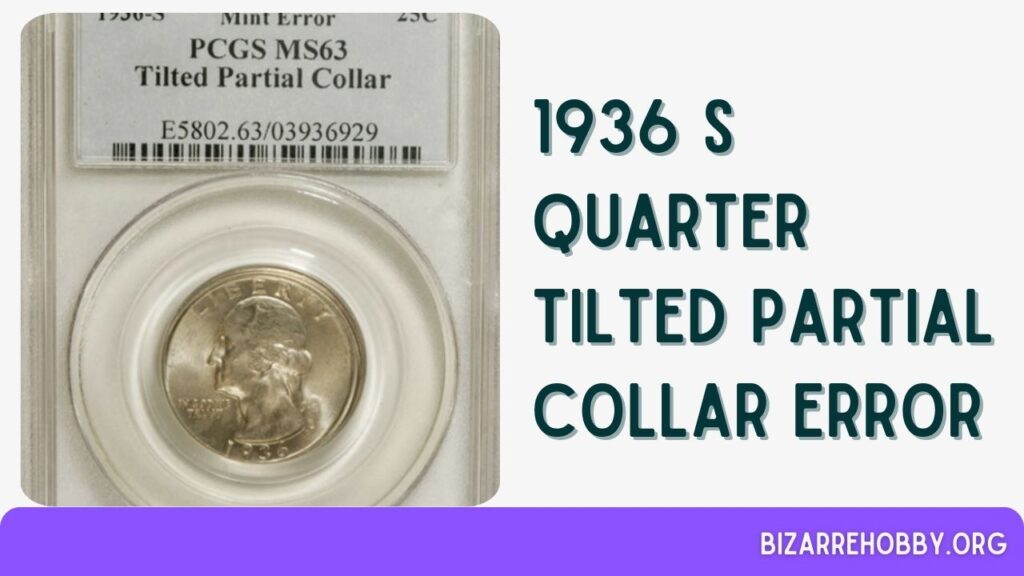
The collar is a metal piece that holds the planchet (blank coin) in place during striking. If the collar is misaligned, it can leave a distinctive mark around the edge of the coin. This error is known as a “tilted partial collar.”
One such error occurred with a 1936 quarter struck at the San Francisco Mint. The collar left a line around three-quarters of the coin, from just north of “IN GOD WE TRUST” to below the “3” in the date. This coin was graded MS63 by the PCGS and sold for over $250 at auction in 2007.
Where to Sell Your 1936 Quarter?
Knowing the value of your 1936 quarters is just the first step. If you’re looking to sell them, there are several online platforms that can help you do so easily. Each platform has its own advantages and disadvantages, so it’s important to choose the one that best suits your needs.
For a detailed guide on the best places to sell your coins online, including introductions, pros, and cons, check out my comprehensive list.
What to look for in a 1936 Quarter?
When evaluating a 1936 quarter, there are several key factors to consider that can significantly impact its value:
- Mint Mark: Check for the presence of a mint mark. Quarters from 1936 were minted in Philadelphia (no mint mark), Denver (D), and San Francisco (S). The mint mark is located on the reverse side of the coin, below the eagle.
- Condition: The condition of the coin is crucial. Coins are graded on a scale from 1 to 70, with higher grades indicating better condition. Look for coins with minimal wear and clear details. Uncirculated coins (mint state) are particularly valuable.
- Errors: Some 1936 quarters have minting errors that can increase their value. Notable errors include the double die obverse (DDO) and tilted partial collar. Look for doubling on the letters of “IN GOD WE TRUST” for the DDO error.
- Luster and Eye Appeal: Coins with original mint luster and strong eye appeal are more desirable. Look for coins that have a bright, reflective surface without significant tarnishing or discoloration.
- Historical Significance: Understanding the historical context of the 1936 quarter can add to its appeal. This year marked the early years of the Washington quarter series, which began in 1932.
FAQs on 1936 Quarter Value
What is the 1936 quarter made of?
The 1936 quarter is composed of 90% silver and 10% copper. In contrast, modern quarters have a copper core with cupronickel cladding. You can easily distinguish between the two types by examining the edge of the coin. Modern cupronickel quarters often show signs of the copper core where the cladding has worn away.
What year quarters are silver?
Washington quarters were first issued in 1932 and were made of 90% silver until 1964. From 1965 onwards, quarters have a copper core with a cupronickel cladding, giving them a silver appearance without the actual silver content.
Final Thoughts
Collecting 1936 quarters can be a rewarding hobby, offering both historical insight and potential financial gain. Whether you’re a seasoned collector or a newcomer, understanding the key factors that influence a quarter’s value is essential.
Always consider the mint mark, condition, and any unique errors when evaluating your coins. With careful examination and a bit of luck, you might just find a valuable gem in your collection.
